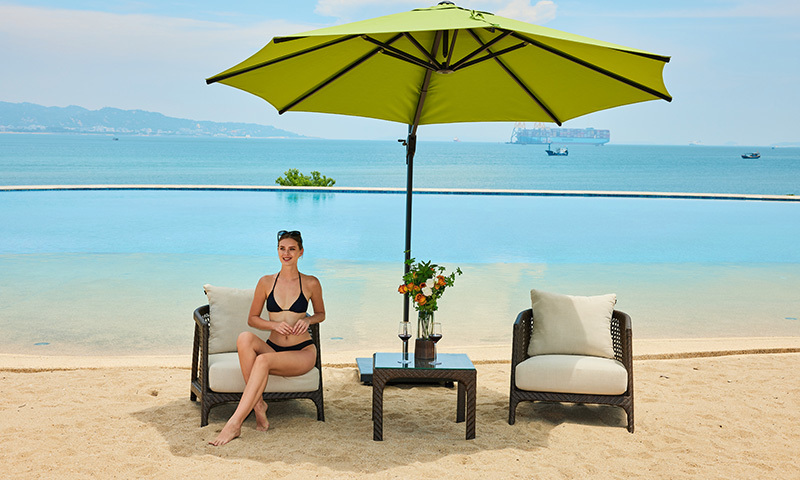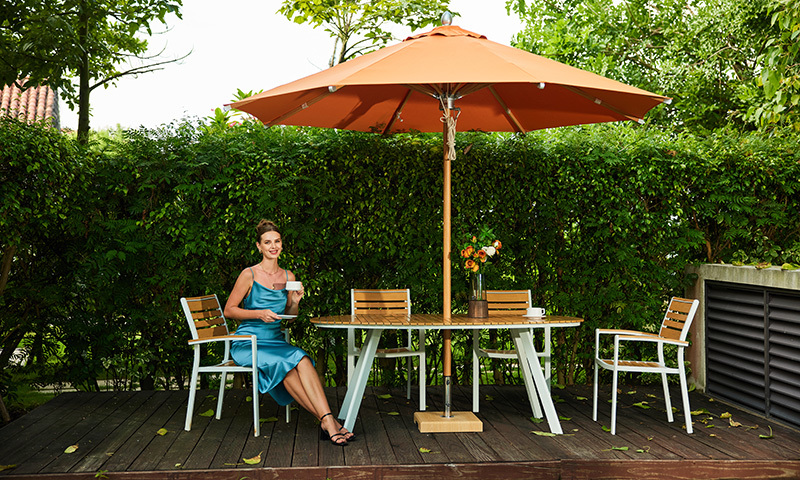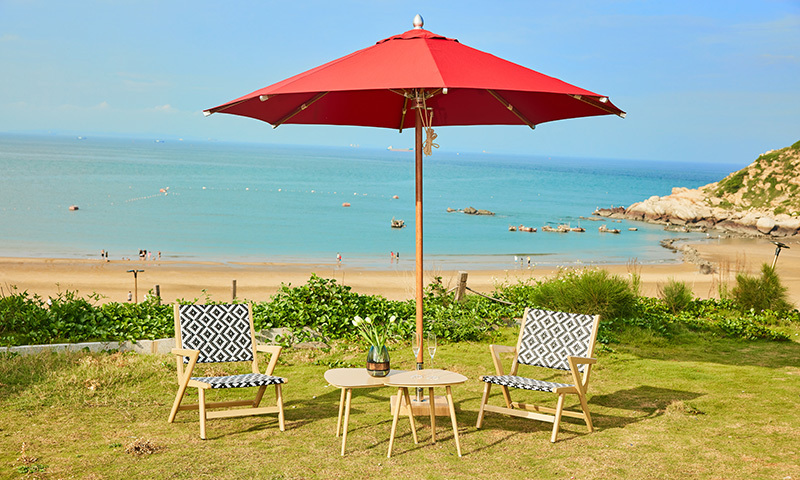The Fabric of Umbrellas Today
Release time:
2023-10-20 19:20
It doesn’t need to be repeated that the material variations of umbrella fabric have varied throughout time. From the stretchers to the coating, even down to the handle, umbrellas were made up of more than what you’d think. There was a distinct level of thought that went into their construction. This level of thought continues today!
Today, umbrella fabric is usually nylon or polyester, with some metal elements in the finer mechanisms. This is in stark contrast to the original flimsy paper parasols employed by ancient societies to protect from the sun.
Quite different from your standard golf umbrella!
Raw Material
Thanks to manufacturing advancements and positive navigation from engineers, the material used to make umbrellas has certainly improved over time. However, you’ll notice that certain fabrics might come with a slightly higher price from the fabric supplier.
In the history of the umbrella and its purpose, a significant moment comes in 1850. This is the time when Samuel Fox pioneered the use of rods in the shape of a ‘U’. These rods provided more robustness for the stretchers and ribs of the humble folding umbrella.
Soon, umbrella engineers came to realize that such a move would drastically improve the quality of the product and its component parts: from the stretchers to the rods, to the ribs and coating.
Before this discovery, the materials used in the umbrella industry for the folding umbrella’s components were typically whalebone or cane.
This resulted in bulky designs that were also quite heavy to carry around and to hold up when in use. Stretchers today can be produced quickly for any umbrella and allow the umbrella to fold easily when not in use.
Nylon
Nylon is the most common umbrella fabric as it is entirely waterproof and can effectively block harmful UV rays too. Pretty handy, right?
A lightweight and flexible fabric, it can be easily stretched over the umbrella’s skeleton during manufacturing, and it doesn’t weigh down the user when they carry the umbrella. From a golf umbrella to your standard rain protector, nylon is a brilliant fabric – any fabric supplier would recommend.
The majority of umbrella designs today feature this material and for a good reason too. Nylon is a type of fabric that will also dry relatively quickly once wet, which makes it ideal for just about any type of umbrella for the rain.
The material itself is very soft with a silk-like texture, and it costs just a fraction which makes it highly desirable as a fabric for umbrella manufacturers.
Polyester
Polyester is a fabric or material that is produced from a synthetic polymer, also known as polyethene terephthalate (PET).
Because this fabric is extremely durable, it makes an excellent material choice for umbrella material. You’ll find this type of fabric material used for fashion and folding umbrellas most commonly as it is both resistant to shrinking and stretching.
The synthetics fibres used throughout the material is extremely lightweight, making it an ideal fabric choice for an accessory such as an umbrella. This material is easy to dye as well making it a fantastic choice for fashion umbrellas.
Pongee
If you haven’t heard of pongee before – and we wouldn’t blame you, it’s pretty specific – it’s a soft Chinese fabric that is made of thin threads that are not bleached.
This material is formed with a mixture of fibres that create a high-density texture. After the material is prepared, it is thinly woven to bring about a cotton-like feel.
Pongee umbrella fabric is far more expensive to produce than nylon, and for this reason, the price of these umbrellas are noticeably higher.
This fabric is waterproof, and because of its smooth surface, rain droplets can run off the material onto the floor.
Satin
Satin is used for fashion umbrellas, and it is known for its thicker texture and reflective sheen.
Satin can look particularly glamorous, and many Chinese umbrella makers choose to utilize this fabric to bring about an expensive look.
Satin can also be made from synthetic and viscose fibres as it is cheaper to produce and it has high elasticity, so it is less likely to rip.
Umbrella Shaft Material
The shaft of an umbrella, also know as the pole, is the most important part of the umbrella as it forms the body of the accessory.
It begins from the umbrella handle and extends right to the tip, where the fabric of choice is pulled over the stretchers.
Every umbrella must also have springs that are placed within the shaft; this is the part of the umbrella that helps it to open and close. This part of the umbrella remains the same across all types of designs from golf umbrellas to PVC umbrellas.
Stick Umbrella
The stick shaft used for stick umbrellas – that don’t fold like that of travel umbrellas– is usually made of variations of wood (including rosewood), metal, aluminium, fibreglass, or acrylic.
Plywood is often the wood material of choice as it is affordable to produce in bulk across stick umbrellas and can be shaped for the handle.
Aluminium offers a more lightweight alternative than wood for an umbrella shaft, making it a popular choice among many umbrella manufacturers.
Folding Umbrella
The shaft of a folding umbrella models is unlike that of stick umbrellas as it isn’t a single stick. Rather, a shaft for a folding umbrella has a round or even hexagonal shape.
Only two materials are used for a folding umbrella shaft: metal and aluminium.
Sometimes a coating is added to a metal shaft, and this coating is composed of quality nickel to bring about a high-sheen finish.
What Are UV Fabrics?
If you’re seeking an umbrella for UV ray protection, you should start by knowing which type of material is suitable for this.
This type of fabric in umbrella designs are characterized by a high number of threads in the fabric itself. In addition to a tightly woven piece of material, umbrella makers coat the umbrella with ingredients that block the sun’s harmful rays when in use.
Generally speaking, the denser a fabric is, the more likely it is to have properties needed to block out the sun. This type of umbrella should also be waterproof as protection against the sun will not be as effective when the fabric used gets damp or wet.
Related news
The benefits of owning a cantilever umbrella
2023-10-20
2023-10-20
2023-10-20


 中文
中文






